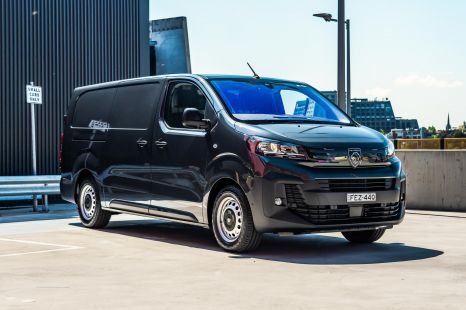

Jack Quick
6 Months Ago
Ford's new commercial van is a worthwhile step forward, and it offers great value despite the increased asking price.
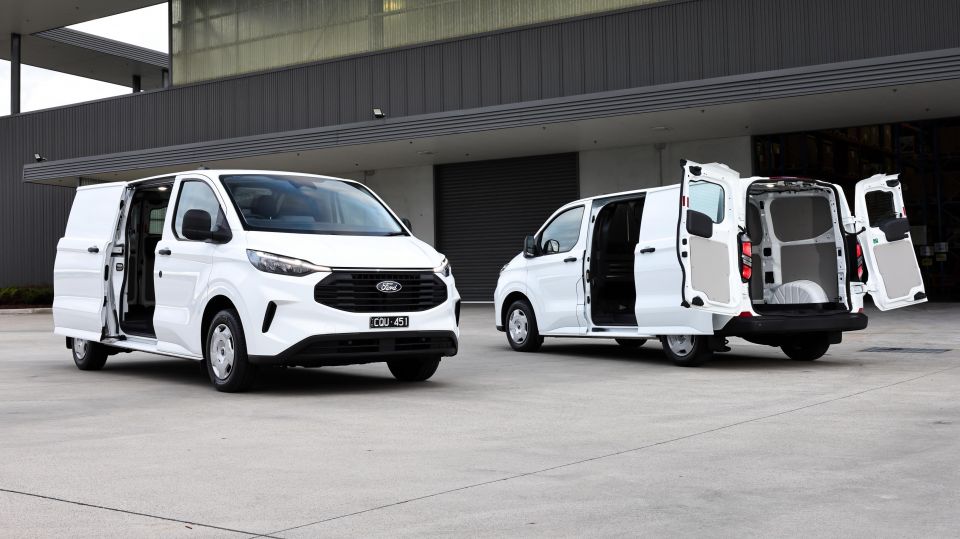
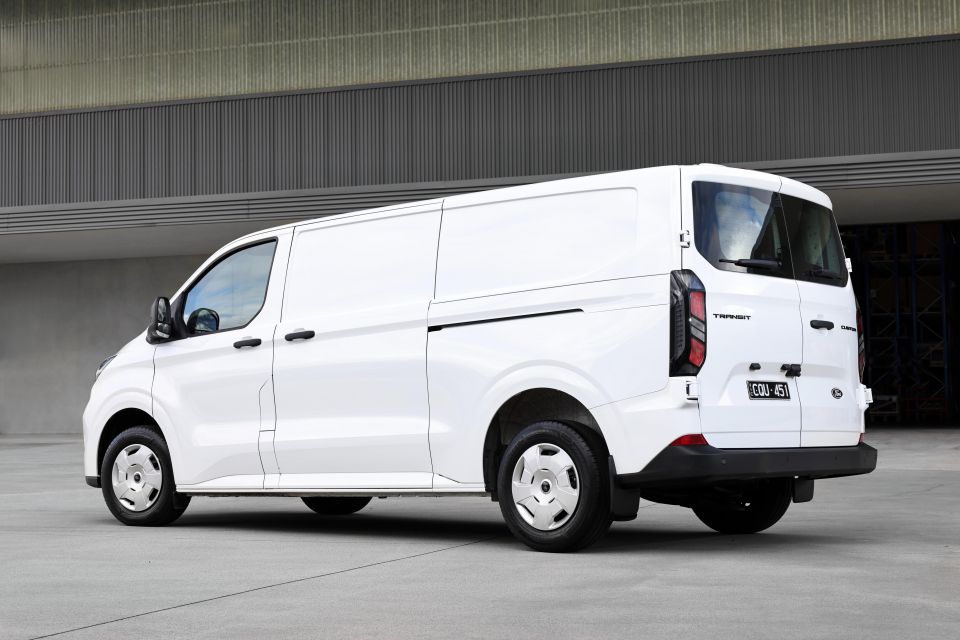

Quickly see how this car stacks up against its competition. Select any benchmark to see more details.
Take advantage of Australia's BIGGEST new car website to find a great deal on a Ford Transit Custom.
Ford has a new van, and it’s a formula that’s hard to argue with.

Take the tried and tested Transit nameplate, combine it with a new architecture, and you get the second-generation Ford Transit Custom – it’s a neat unit too.
Ford says its underpinnings, which will be shared with the Volkswagen T7 Transporter, have allowed for a lower floor height while keeping the van at less than two metres tall.
It has independent rear suspension, a large infotainment display, and the same refreshed diesel engine across the range, all of which are intended to present the least intimidating and most user-friendly version of the Transit Custom yet.
On test here is the bog standard short-wheelbase 2025 Ford Transit Custom Trend, which costs upwards of $55,000 before on-road costs. That means it’s more than $5000 more expensive than not only its outgoing equivalent, but also its Toyota HiAce rival.
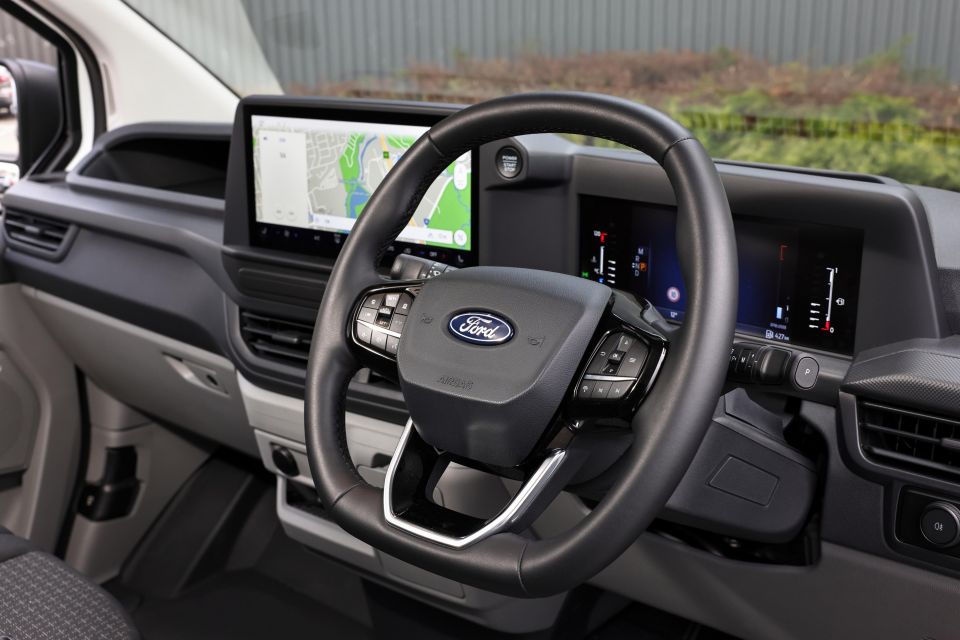
Both short- and long-wheelbase Trend variants share in the same standard equipment and safety gear, and offer a barebones experience for those who just need a van to get the job done without the spice of the Sport.
Do the updates justify the price increase, or are you still better off going for a van from another brand?
Our tester was the base-spec Trend SWB, and it’s priced at $55,990 before on-road costs. That’s $5800 more than the old base model, and around $5100 more than the equivalent base HiAce.
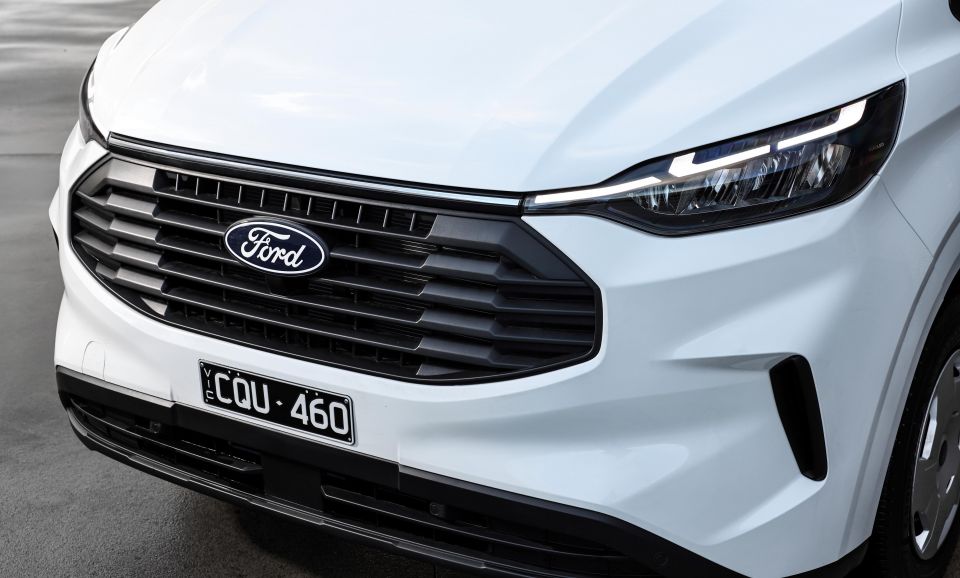
| Model | Price before on-road costs |
|---|---|
| 2024 Ford Transit Custom Trend SWB | $55,990 |
| 2024 Ford Transit Custom Trend LWB | $56,990 |
| 2024 Ford Transit Custom Sport SWB | $59,990 |
| 2024 Ford Transit Custom Sport Double Cab | $62,990 |
To see how the Ford Transit Custom stacks up against its rivals, use our comparison tool.
As far as range-opening commercial vans go, this one is surprisingly nice.
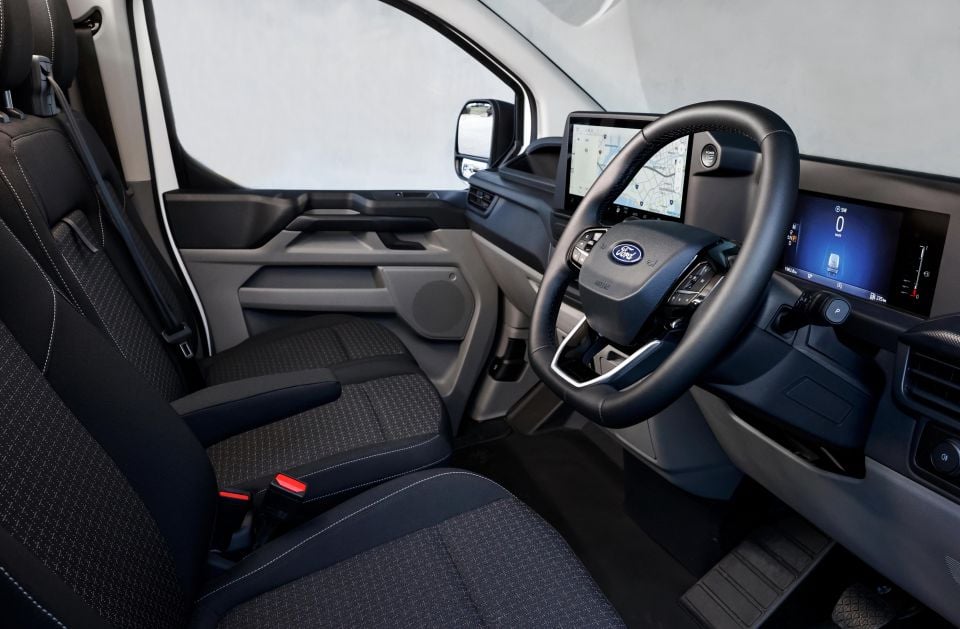
Before we get to the cargo space as the reason why you’d by a van in the first place, it’s difficult to avoid praising the new Transit Custom for its updated front cabin.
Sure, it might not be the flashiest place to spend time, but there’s a satisfying quality to its straight edges and large, flat surfaces. It’s almost entirely covered in hard plastics, but the dash and doors feature a two-tone colour scheme and some textured surfaces on top of the dash to keep things interesting in a subdued way.
It’s very simple in its layout too, which comes with its own set of benefits.
For a start, less going on means less to go wrong. Buttons are kept to a minimum and everything in the cabin is incredibly hard-wearing and will stand up well to normal use, which is supported further by the hard rubber flooring spanning the width of the cabin.
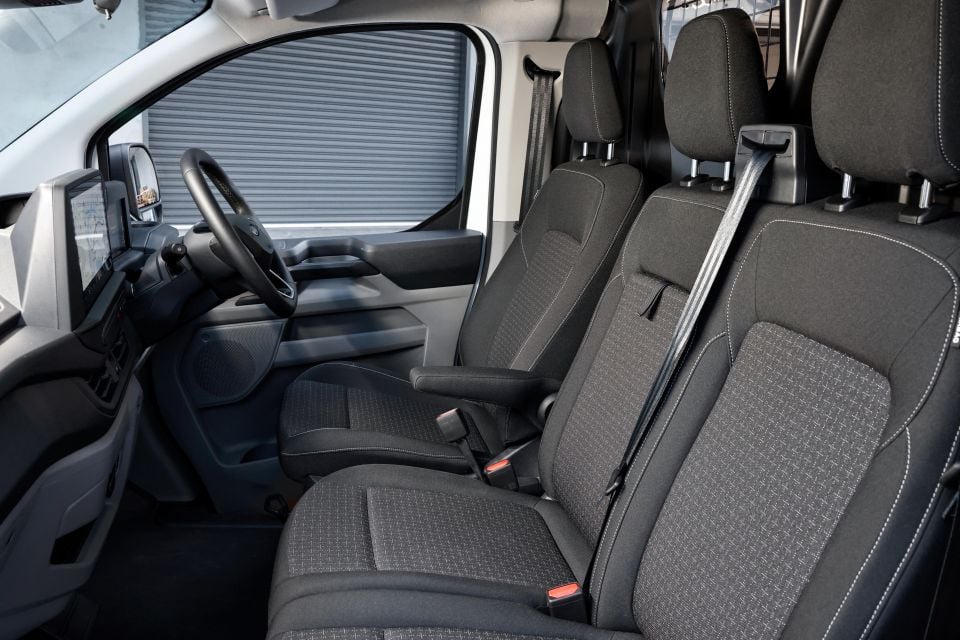
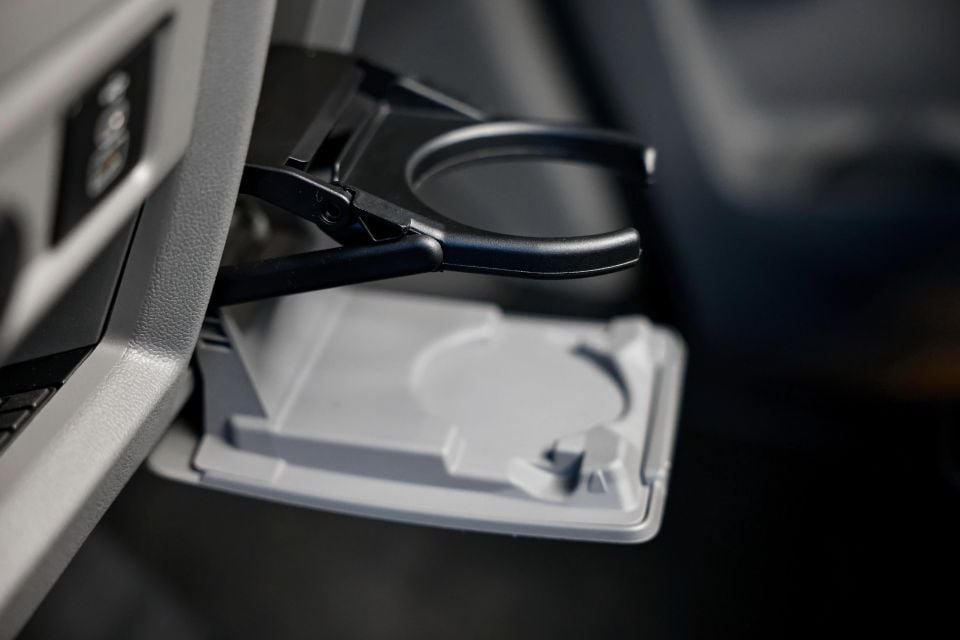
All the surfaces around the key touch points are either some form of rubber or dull-finish black plastic, which is again appropriately durable without being grating to both look at and touch.
The use of such materials is to be expected in a vehicle like this, and while it’s similar to what you’d find in a HiAce, its application in the Ford feels much more clean and fresh.
Everything is more or less where you’d expect it to be. There are a few European quirks peeking out around the cabin, but almost everything else is fairly self-explanatory.
Need cupholders? They’re on the top of the dash, or you can fold one out from the centre panel. Wireless phone charger? It has one, and it’s that slot underneath the dash. Cabin storage? You have a passenger glovebox, a large cut out on top of the dash, and a hidden under-seat compartment.
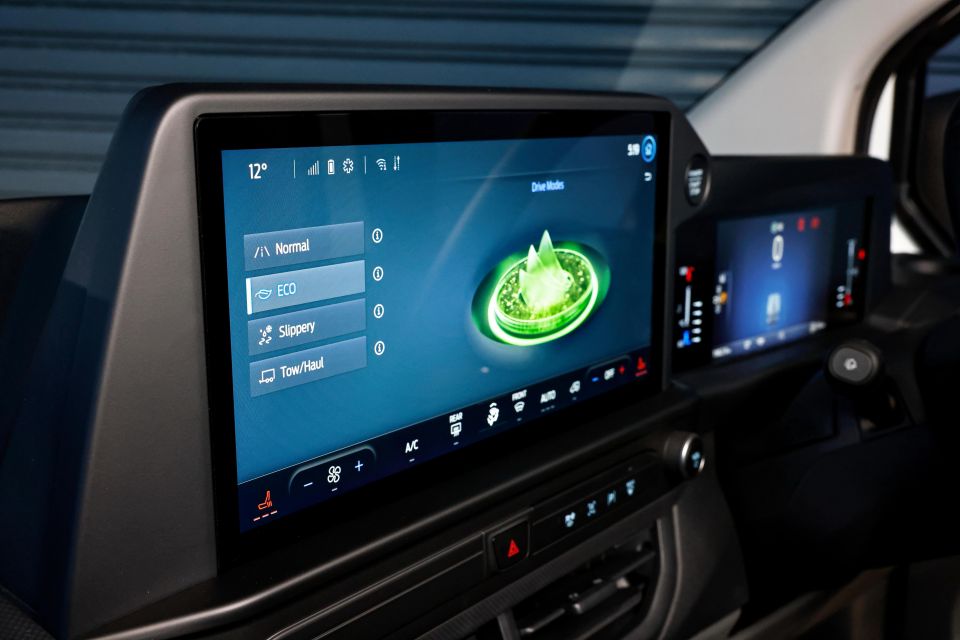
There are some oddities though. The main one is the gear selector, which has been moved away from the typical cabin-centre perch. It’s instead taken the place of the right-hand steering column stalk, and you’d be forgiven for struggling to find it at first.
Unlike some other modern cars with a similar setup, the selector looks like a traditional indicator stalk. The indicator has been moved to the left side of the wheel like most European cars, though it shares a stalk with the windscreen wiper controls.
While this arrangement helps keep clutter down, it can take a moment to get used to. As with other Volkswagen-influenced products, the headlight controls are located down and to the right of the wheel on a dedicated panel.
Uniquely, the Transit Custom can serve as a mobile work station. It has an embedded 5G modem as standard, and you can opt for a mobile office pack with a foldable steering wheel which can act as a makeshift laptop stand.
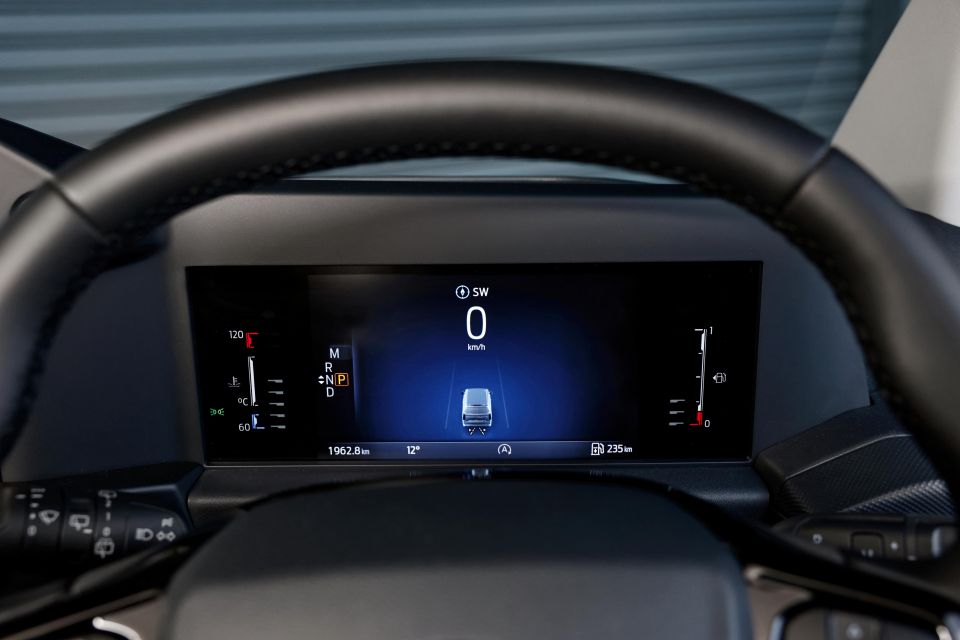
The steering wheel itself is a nice unit. It’s squared-off and leatherette-wrapped, which somehow seems to just make sense in a commercial van. Key controls are located here too, and if you know the Ranger it’ll look very familiar.
Like the rest of the cabin, the buttons are large and sturdy and are identified by clear labels. A complaint here is the gloss black plastic around the buttons and on the split bottom spoke, which – even though it’s the only place you’ll find it in the cabin – gets grubby very quickly.
Another Ranger similarity is the instrument cluster, which is dominated by a 7.0-inch screen flanked by two vertical gauges for temperature and fuel level. It’s a clean setup with nothing unnecessary going on, though it does add a little bit of flavour with its Ford-blue background.
The headlining feature is the Transit Custom’s 13.0-inch touchscreen infotainment display.

It’s remarkably crisp and reliably responds to all inputs, with loads of information and settings tucked away within the menus. It takes a moment to navigate, but once you know what you’re looking for it’s simple enough.
Thankfully, there are minimal options that can only be adjusted using the screen, so you’ll primarily be using it with wireless Apple CarPlay or native functions like DAB+ digital radio or satellite navigation.
The main issue here is the lack of a physical climate control system. Instead, there’s a fixed touchscreen strip at the base of the screen.
As practical as the rest of the cabin is, I wish there was a dedicated system elsewhere, like on the thin panel below the screen around the hazards switch. There are already buttons here for drive mode and the front demister, so why not go all the way?
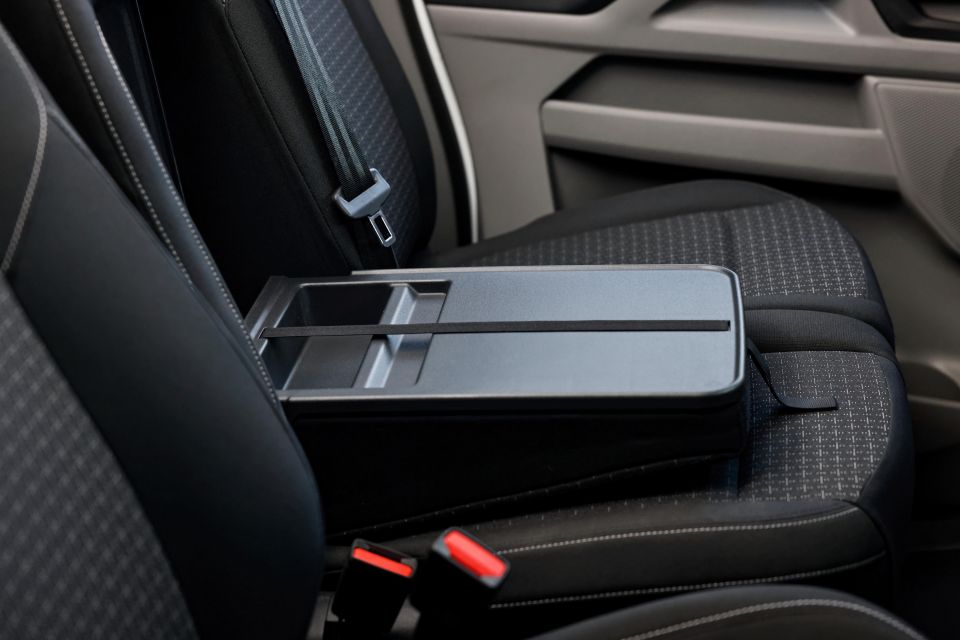
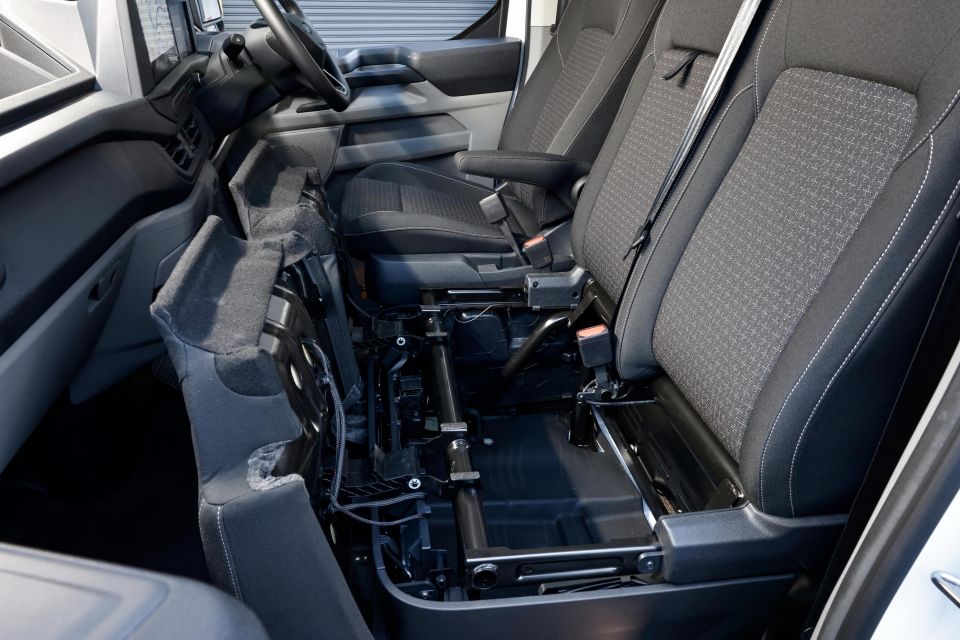
Standard in the Trend are cloth-trimmed seats. It’s a sensible material given the Transit’s hard-working roots, and they’re comfortable to sit in for long periods of time with the help of the driver’s fold-down armrest.
Ford has managed to squeeze in three seats, which is a nice bit of added passenger capacity that you don’t get in the equivalent HiAce. You’d hope your passengers are comfortable with one another though, because those two seats are quite close together.
There’s a fold-down tray on the middle seat, and both seats can fold forward like a truck cab to reveal additional storage. It’s also accessible by the hatch on the bulkhead, which allows you to fit longer items like pipes along the floor.
Behind the seats is the black metal bulkhead, which unlike the HiAce comes standard. It separates the cabin from the cargo hold, and means it’s easier to control the temperature while getting some extra sound deadening. It also has a small window to allow rear visibility.
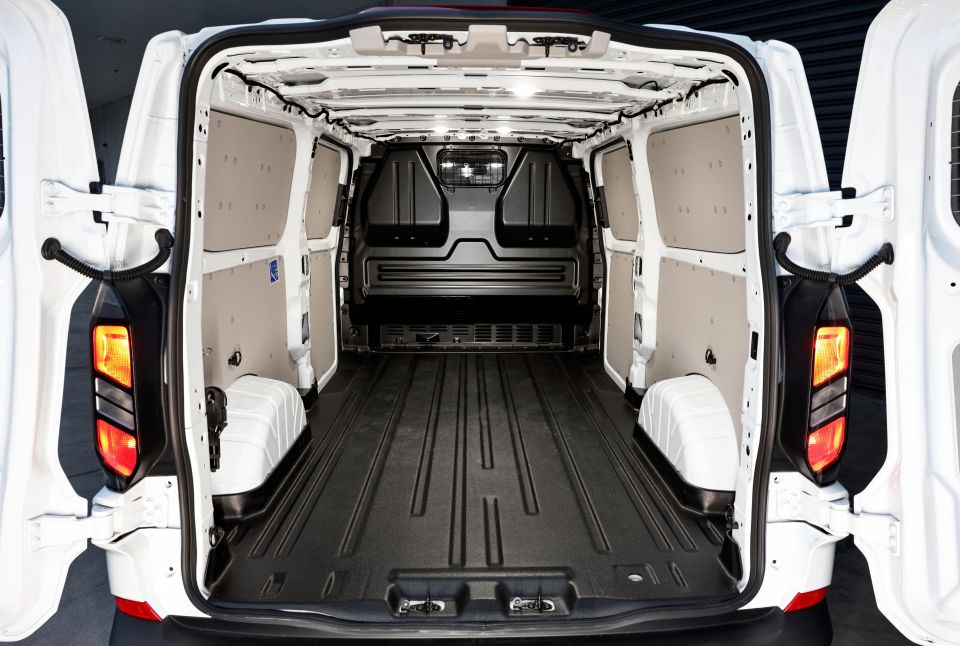
The cargo bay is where the money is made for the Transit Custom, and it’s a well-appointed setup. Covering the entirety of the floor is a black plastic panel, which offers adequate protection when loading and unloading goods.
Its walls are finished with eight individual panels, which are unremarkable in appearance but add extra protection, and like the floor covering gives some extra insulation from sound. There’s not as much sound coming in as there is some of its rivals though, as the Transit Custom is front-wheel drive only.
That means there’s no pesky transmission tunnel to deal with, which provides a completely flat floor up front and allows for the three seats.
Included as standard are rear barn doors and a passenger side sliding door, which opens to the kerb when parked. You can add a driver’s side sliding door for an extra $1000, but we feel it would make sense to have one included as standard.

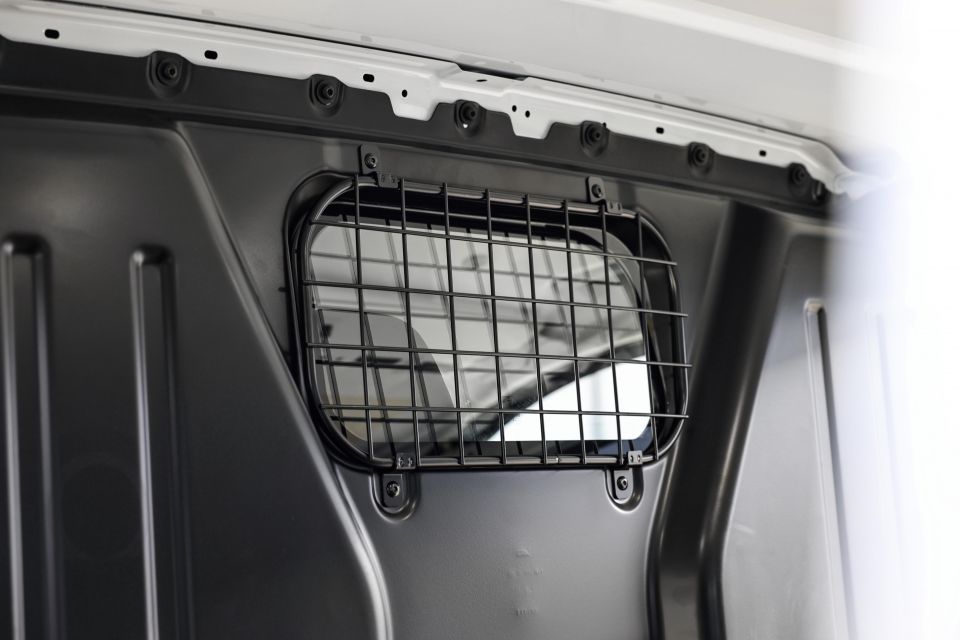
Other than that, there’s really nothing else to spruce it up. The ceiling is bare but comes standard with bright lights, there’s exposed wiring running the length of the bay, and there are a selection of tie-down points at the front, middle, and back.
There’s also recovery gear like a jack tucked away in the back corner, but it’s generally quite utilitarian in appearance and does well for the purpose it serves.
Being a short-wheelbase model you get less capacity than a base HiAce, but the added protection and solid bulkhead included as standard are worth having. Volume in the SWB is rated at 5.8m, while the LWB version increases it to 6.8m; larger than the LWB HiAce’s 6.2m
If need, you can opt to have a digital rear view mirror and integrated dashcam added, which are both incredibly useful in a van.

| Dimensions | Ford Transit Custom Trend SWB |
|---|---|
| Length | 5050mm |
| Width | 2275mm (2148mm mirrors folded) |
| Height | 1984mm |
| Wheelbase | 3100mm |
| Cargo bay length | 2602mm (to bulkhead) 3050mm (incl. load-through hatch) |
| Cargo bay width | 1392mm between arches |
| Cargo bay height | 1427mm |
| Cargo bay volume | 5.8m |
| Side door opening width | 1030mm |
| Side door opening height | 1301mm |
| Rear door opening width | 1400mm |
| Rear door opening height | 1316mm |
To see how the Ford Transit Custom stacks up against its rivals, use our comparison tool.
All Transit Custom variants in Australia utilise the same 2.0-litre four-cylinder turbo-diesel engine. Drive is sent to the front wheels exclusively via an eight-speed automatic transmission.

| Specifications | Ford Transit Custom |
|---|---|
| Engine | 2.0L 4cyl turbo-diesel |
| Power | 125kW @ 3500rpm |
| Torque | 390Nm @ 1750-2500rpm |
| Transmission | 8-speed auto |
| Drive type | FWD |
| Fuel economy (claimed) | 8.0L/100km |
| Fuel economy (as tested) | 8.3L/100km |
| CO₂ emissions (claimed) | 209g/km |
| Fuel tank | 70L (+20L AdBlue tank) |
| Kerb weight | 2512kg |
| Payload | 1255kg |
| Braked towing capacity | 2500kg |
| Gross vehicle mass (GVM) | 3225kg |
| Gross combination mass (GCM) | 5725kg |
To see how the Ford Transit Custom stacks up against its rivals, use our comparison tool.
In comparison with similar vans, the Transit Custom offers a comfortable and fun ride.
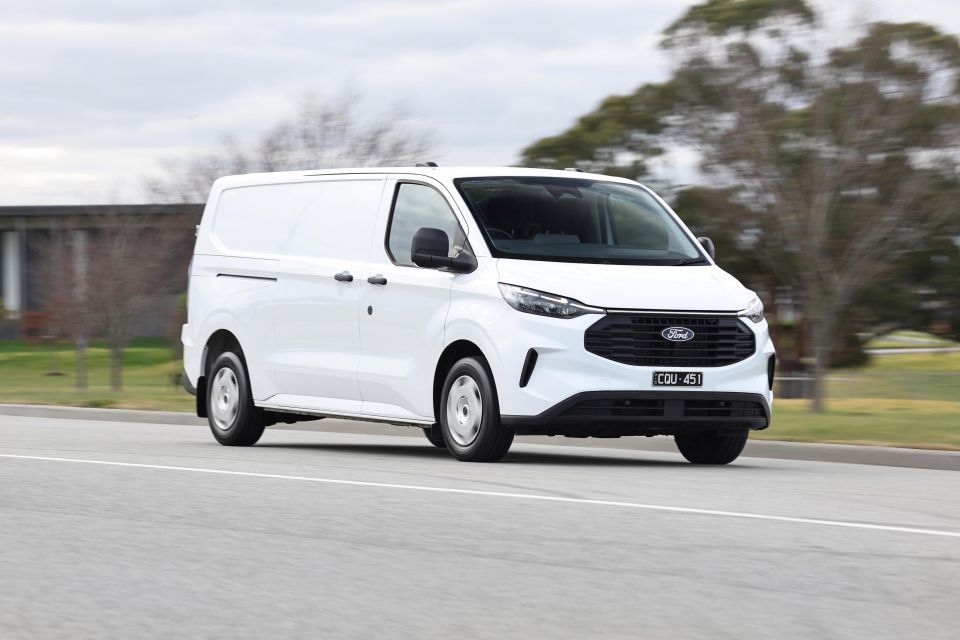
The first thing you’ll notice is the seating position, which feels like it’s considerably higher than in a HiAce. You have a commanding view over most of the traffic around, and there’s great visibility as a result.
It makes the Transit Custom an easy drive, and you never feel like it’s bigger than it is. The sharply sloped bonnet provides good vision out the front for navigating tighter spaces, and it feels like the van is trying to work with you to make driving as stress-free as possible.
Visibility out the rear is made easier by the large side mirrors, and though it does have blind-spot monitoring, you’ll be able to check for hazards yourself thanks to the fisheye mirrors fitted to the bottom of each side housing.
Those curved mirrors are something the HiAce lacks, and having it in a van where you can’t look over your shoulder to do a head check is that little bit of extra security to make sure you’re not cutting someone off. It also makes the Transit Custom much easier to park in tight spaces.

Interior visibility out the rear of the Transit Custom isn’t ideal. While you do get a window at the top of the bulkhead, its small size and wire shield make it difficult to see through using the rear view mirror.
It doesn’t help that the rear barn doors add more metal in the very middle of the van, because it leaves you with a small patch of visibility out either of the rear windows.
That bulkhead window also reflects the large infotainment screen, which can be distracting when you’re driving on busy roads. The white-coloured theme the screen uses during the day doesn’t help, and any light from the screen reflects easily at night.
One of the option packs removes the window on the bulkhead, and replaces the rear-view mirror with a digital option and rear-facing camera instead.

Under the bonnet is largely the same diesel as in the previous Transit Custom, though it’s been refreshed for the new model. It wasn’t that spritely, even with an empty cargo bay and only one person in the car.
It’s mated with an eight-speed automatic transmission, and while it could get it off the line without any issues, there were a few strange stumbles as it shifted between the lower gears.
At one point as I tried to pull away from the lights quickly, it didn’t hesitate to get moving but then stopped for a moment as it shifted from first to second. It’s possible the gear ratios are quite short given the number of gears, which helps to keep the engine at peak torque when fully loaded.
While that’s good, its acceleration is considerably less smooth than in a HiAce. The Toyota feels faster too, although that isn’t what these cars are about.
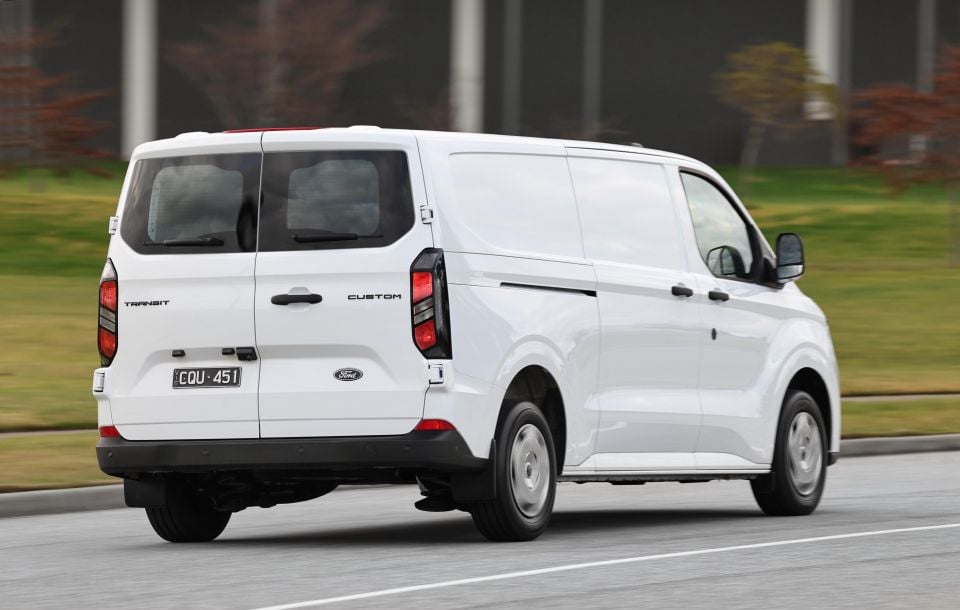
Unlike the Toyota, the Ford does well to minimise noise entering the front cabin. The bulkhead helps with this, as well as the fact there’s no driveline running to the rear of the van, meaning no unwanted mechanical noise exists to make its way in.
Wind and road noise are comfortably minimal too, which is impressive given it’s essentially a large square box. There were some noise issues though, and ironically they came from the bulkhead.
It produced a strange rattle and squeak from above the driver’s head, though it was inconsistent on when it would act up. There were some small rattles from the dashboard too, which was made worse by cold weather.
As they weren’t constant, it was easy to put up with the occasional noises. They could do with being ironed out, but in a van I’d rather have a bulkhead fitted as standard and deal with the odd noise it makes than not have one at all.
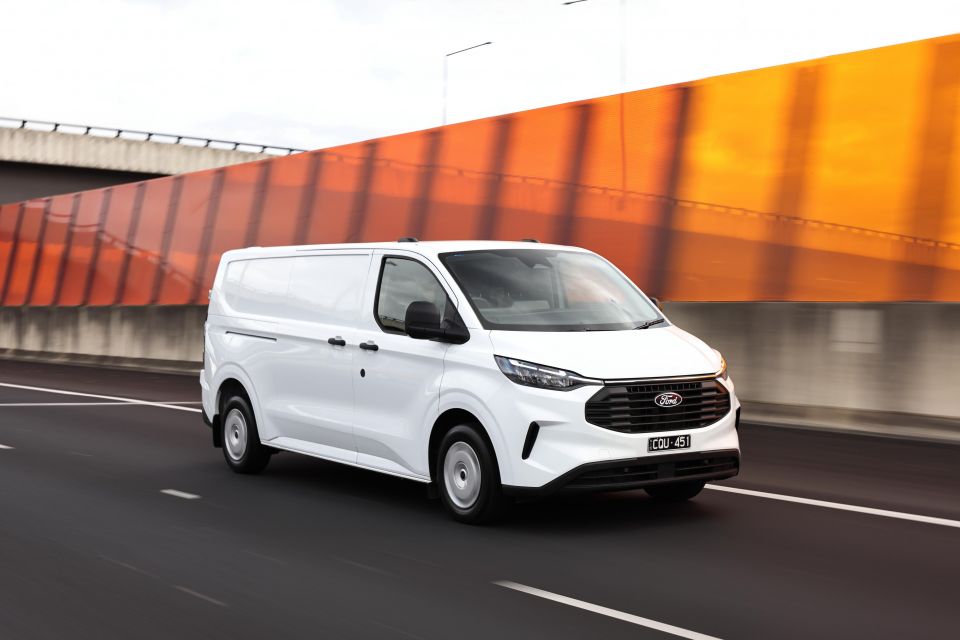
The new Transit Custom is well-equipped with a range of driver assist tech, most of which works as it should without fault. One such system is the adaptive cruise control, which works smoothly and behaves consistently each time it’s activated.
There’s also lane-keep assist, which isn’t intrusive when it activates and does well to keep the van situated. Rather than clumsily grabbing a brake, it actively steers the vehicle.
It’s fitted with an auto stop/start function to save fuel, but it didn’t work flawlessly. It was awkward at times, and on one occasion stopped the car and then necessitated a shift into park to restart it.
One of the Transit Custom’s strengths is its steering feel, because despite its size it’s very light and easy to use. The squared-off steering wheel contributes to that, but it’s manoeuvrable at low speed and remains consistent at high speed.
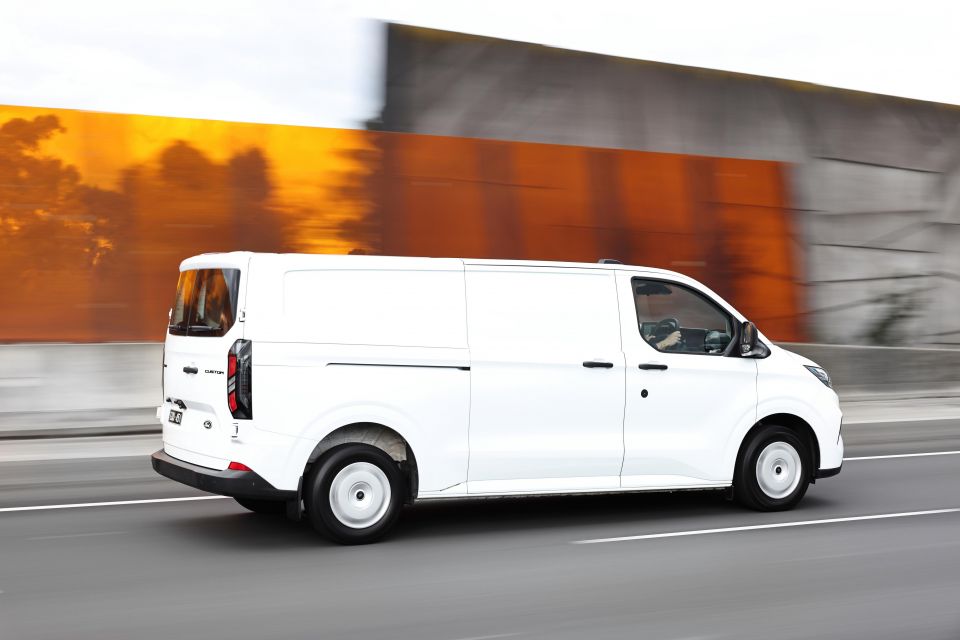
It’s also comfortable on the move, as the suspension setup does well to iron out bumps. The seats are comfortable too, and it never feels like a chore to spend longer periods of time behind the wheel.
It offers a well-rounded package, and despite its small hiccups it’s more than comfortable to live with.
To see how the Ford Transit Custom stacks up against its rivals, use our comparison tool.
There are two versions of the base Trend, and both share in the same standard features.
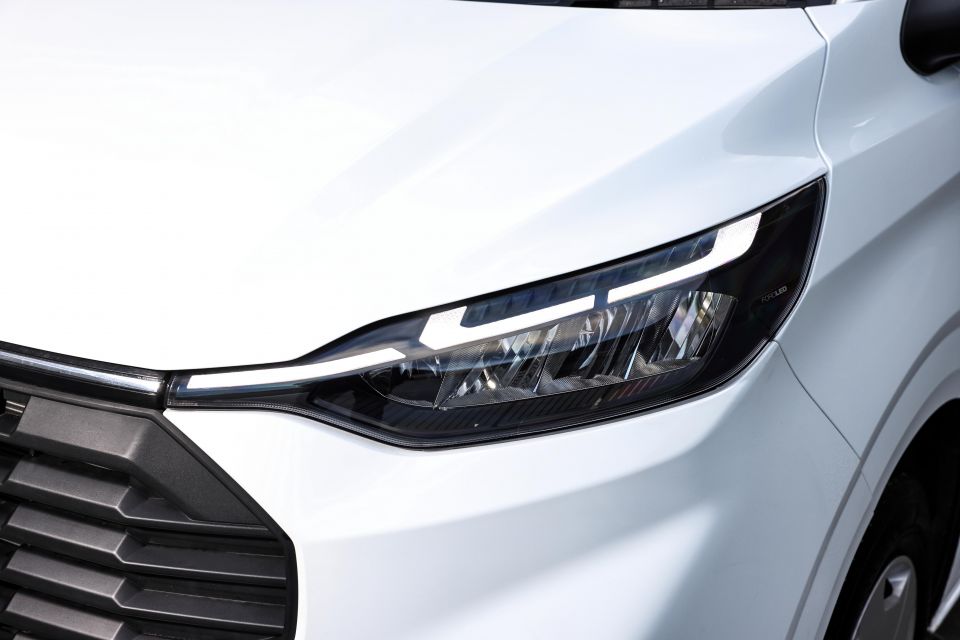

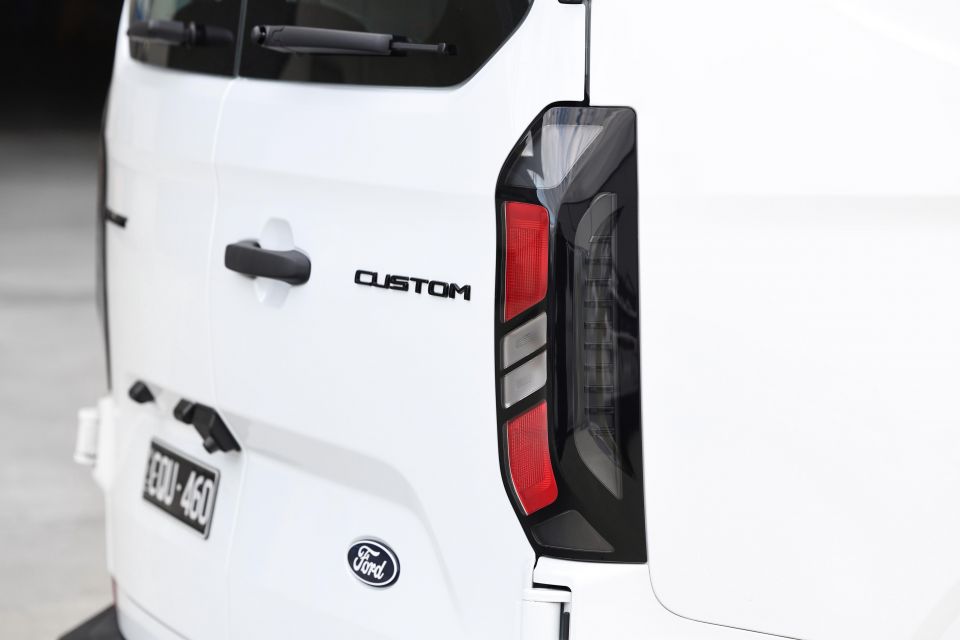

Transit Custom Trend equipment highlights:
Secure Visibility Pack ($1500)
Dual side load doors with no windows ($1000)
The new-generation Ford Transit Custom has yet to be tested by ANCAP, and is therefore unrated.
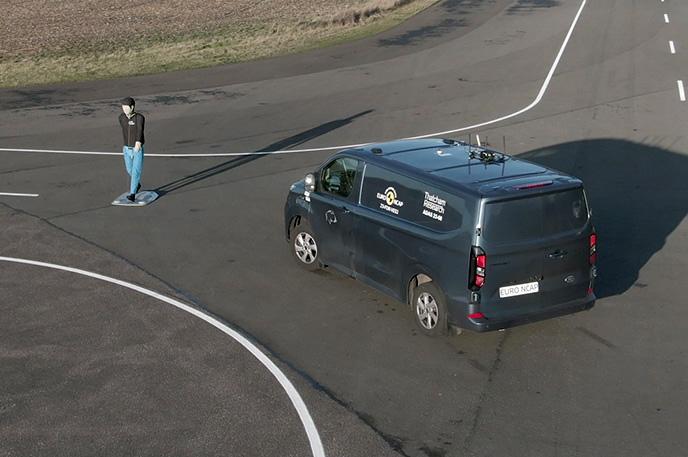
It does, however, have a Platinum rating from Euro NCAP based on testing of its driver assist technology.
Standard safety equipment includes:
Ford backs its vehicles with a five-year, unlimited-kilometre warranty, with 12 months of roadside assistance included at the time of purchase and refreshed every service – so long as it’s done within the Ford network.
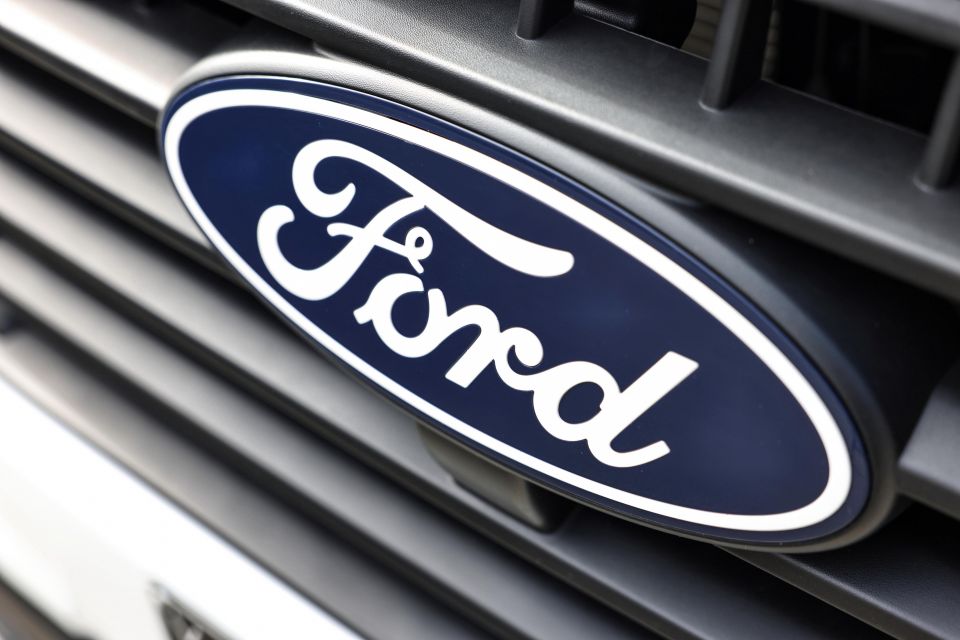
| Running costs | Ford Transit Custom |
|---|---|
| Warranty | 5 years, unlimited kilometres |
| Roadside assistance | 12 months (from purchase, then service-initiated) |
| Service intervals | 12 months or 30,000 kilometres |
| Capped price servicing | 4 years, $499 each (retail and small business only) |
| Total capped price service cost | $1996 |
For other buyers, the first four services are priced at $580, $915, $715, $915 respectively. By comparison, each service on the HiAce only costs $290, but it requires servicing every six months or 10,000km – much shorter of an interval than the Ford.
To see how the Ford Transit Custom stacks up against its rivals, use our comparison tool.
It’s a commercial van, and it’s quite a polished one at that.

Ford’s updates have done well to improve the Transit Custom and bring it into the current day, all without sacrificing its practicality as a stock standard van.
The short-wheelbase in particular is a neat package, because you still get plenty of cargo space while maintaining reduced dimensions, which – in combination with the sensors, camera, and distorted mirrors – makes it easier to get into tight spaces for parking or loading.
It does lack a driver’s side sliding door as standard, which would give you that extra bit of flexibility should you need it. As it stands, we think the $1000 option to have one fitted is worth the cost.
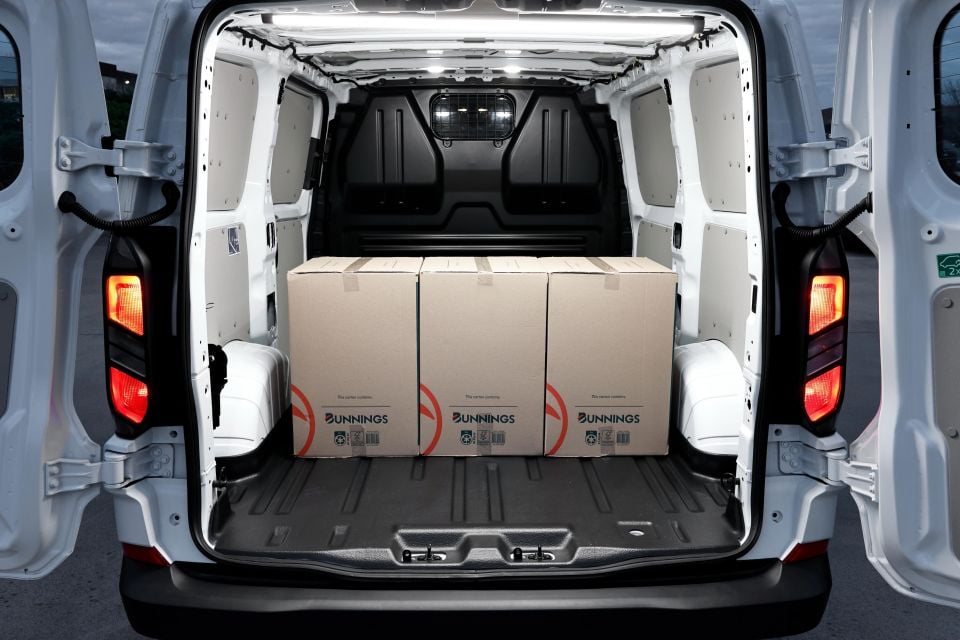
It’s also worth fitting the digital rear view mirror and dashcam, which for business buyers saves the hassle of fitting them after the fact and makes it easier for drivers who aren’t used to the van to get in and feel confident.
For both business and private buyers, the servicing costs may seem intimidating in comparison with the competition at first, but the Transit Custom’s service intervals are much longer than something like the HiAce. That means more time in action making money and less time at the dealer.
If you need a little bit more space, the Trend LWB would be the ideal option. If it’s more luxury you’re after, the Sport should have you covered.
But for the small business owner or casual hauler, the Trend SWB offers plenty of what you’d need while still packing in quality tech and driving characteristics.
This is a strong evolution of the old formula, and feels like a call to arms for the other manufacturers to take note and compare against it their own offerings.
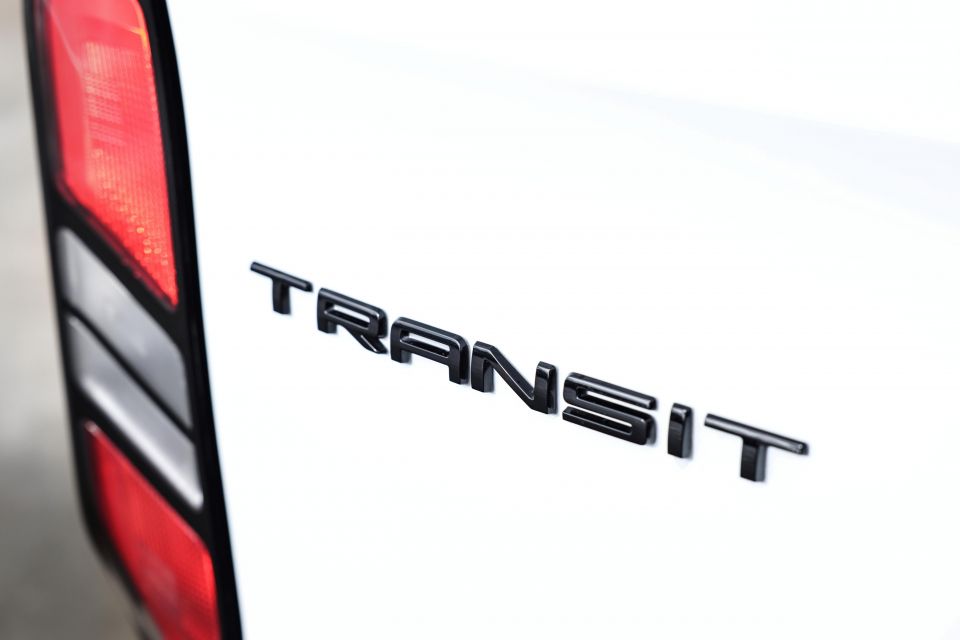
Click the images for the full gallery
MORE: Buy a Ford Transit Custom MORE: Everything Ford Transit Custom
Take advantage of Australia's BIGGEST new car website to find a great deal on a Ford Transit Custom.
Max Davies is an automotive journalist based in Melbourne, Australia. Max studied journalism at La Trobe University and stepped into the automotive world after graduating in late 2023. He grew up in regional Victoria, and with a passion for everything motorsport is a fan of Fernando Alonso.


Jack Quick
6 Months Ago
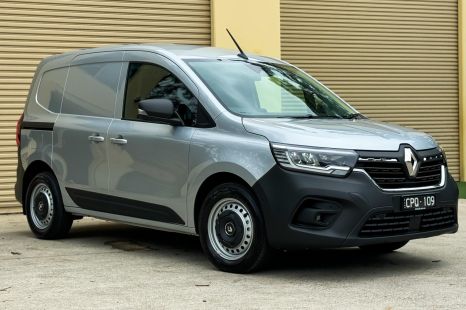

Matt Campbell
5 Months Ago
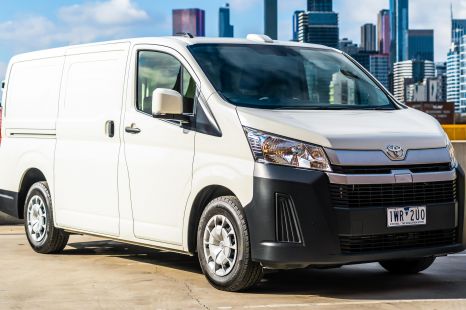

Max Davies
4 Months Ago
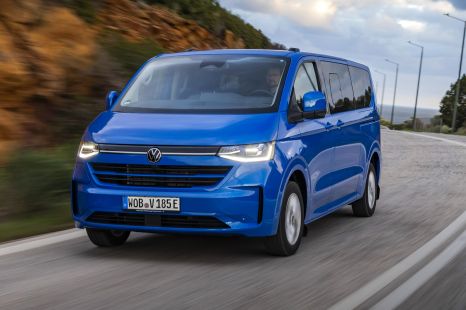

Dave Humphreys
2 Months Ago


Max Davies
2 Months Ago


Jordan Mulach
2 Months Ago